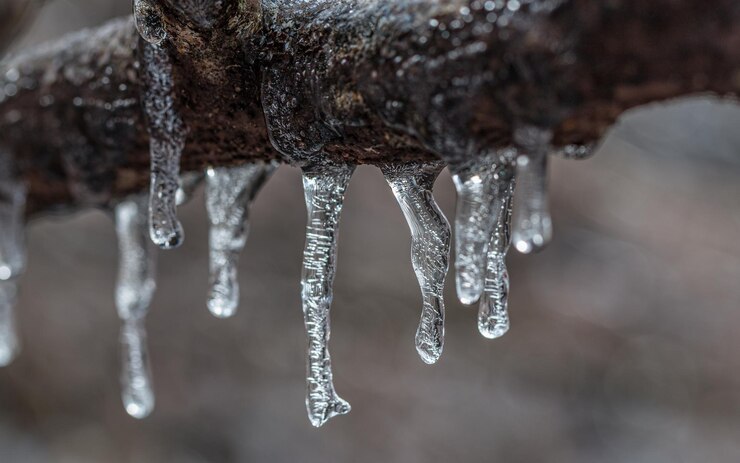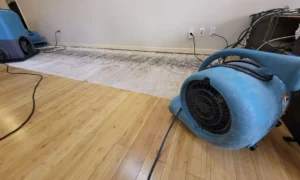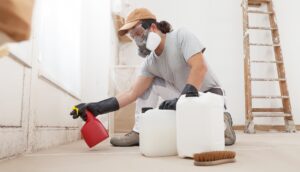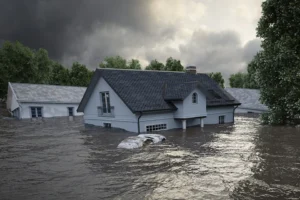Winter can be harsh on your home, and one of the biggest concerns is the threat of frozen pipes. When water in your pipes freezes, it can expand and cause the pipe to burst. This can lead to significant water damage and costly repairs. To help prevent this from happening, it’s crucial to prepare your home before the temperatures drop.
Taking the time to follow a winter maintenance checklist can save you a lot of trouble. Simple actions can make a big difference in keeping your pipes from freezing. Ensuring that your pipes and water heaters are properly insulated, sealing drafts and cracks, and keeping a consistent temperature inside your home are just a few of the steps you can take.
It doesn’t take much to safeguard your home against the winter chill. With some planning and regular checks, you can keep your home warm and your pipes safe. By following a thorough maintenance routine, you can enjoy a worry-free winter and avoid the hassle and expense of dealing with frozen pipes.
Insulate Pipes and Water Heaters
Insulating your pipes and water heaters is an essential step to prevent them from freezing during the winter months. When pipes are exposed to cold air, the water inside can freeze, expand, and cause the pipes to burst. To avoid this, you can use various types of insulation materials.
Foam pipe insulation is an affordable and easy-to-install option. It comes in pre-slit tubes that you can simply slip over your pipes. Secure the insulation with tape to ensure it stays in place. For more exposed areas, consider using fiberglass pipe wrap. This material provides excellent insulation and can be secured with duct tape.
Don’t forget about your water heater. Insulating the water heater tank can help maintain a consistent water temperature, reducing the risk of freezing. You can use a water heater blanket, which is a type of insulation designed specifically for this purpose. Wrap the blanket around the tank and secure it with tape or straps.
Regularly check your insulation for any signs of wear and tear. Replace any damaged sections to keep your pipes and water heaters protected throughout the winter. Proper insulation can significantly reduce the risk of frozen pipes and save you from expensive repairs.
Keep the Heat On
Keeping your home’s temperature consistent is crucial in preventing frozen pipes. When the temperature inside your home drops too low, pipes are more likely to freeze. Maintaining a steady temperature ensures that your pipes remain warm, even during the coldest nights.
Set your thermostat to no lower than 55 degrees Fahrenheit. This temperature is high enough to keep the water in your pipes from freezing. If you’re going to be away, make sure your heating system is set to maintain this temperature while you’re gone. This helps prevent any unexpected drops in temperature that could lead to frozen pipes.
Encourage warm air circulation by opening cabinet doors under sinks and near exterior walls. This allows the warm air to reach pipes and helps keep them from freezing. You can also use space heaters in particularly cold areas of your home, but make sure to follow safety guidelines to avoid fire hazards.
Consider installing a programmable thermostat. These devices can help you maintain a consistent temperature by automatically adjusting the heat according to your schedule. This way, you can save on heating costs without risking frozen pipes. Keeping the heat on is a simple yet effective way to protect your home during the winter.
Seal Drafts and Cracks
Sealing drafts and cracks around your home is essential to keep cold air out and warm air in. Even small gaps can let in a lot of cold air, which can lower the temperature around your pipes and increase the risk of freezing. Sealing these openings helps maintain a consistent indoor temperature and protects your pipes.
Start by inspecting areas around windows, doors, and where pipes enter or exit your home. Use caulk to seal any gaps around window and door frames. You can also use weather stripping around doors and windows to prevent drafts. For larger gaps, consider using spray foam insulation, which expands to fill the space and provides a good seal.
Don’t forget to check your attic, basement, and crawl spaces for drafts. Insulate these areas well to keep them warmer. You can use foam board insulation or fiberglass insulation to cover these spaces. Make sure to check around electrical outlets and light switches on exterior walls, as these can also be sources of drafts. Sealing drafts and cracks is a simple and effective way to keep your home warm and your pipes safe during winter.
Monitor and Maintain Proper Water Flow
Keeping a proper water flow in your pipes can help prevent them from freezing. When water moves through the pipes, it is less likely to freeze. There are several steps you can take to ensure a steady water flow during the winter months.
First, let a trickle of water run from your faucets, especially during very cold nights. This simple step keeps water moving through the pipes and reduces the chance of freezing. Make sure to do this for both hot and cold water lines.
Check your home’s main shut-off valve and make sure it is in good working order. Knowing how to quickly shut off your water supply can help minimize damage if a pipe does burst.
Regularly inspect your plumbing for any signs of leaks or damage. Fix any small problems immediately to avoid bigger issues later. You might also consider installing a smart water monitor. These devices can alert you to changes in water pressure or potential leaks, helping you catch issues early.
By keeping an eye on water flow and maintaining your plumbing, you can drastically reduce the risk of pipe bursts in the winter.
Conclusion
Winter can bring many challenges, but frozen pipes don’t have to be one of them. Simply preparing your home with proper insulation, sealing drafts, keeping a consistent temperature, and maintaining water flow can make a big difference. These steps help protect your pipes from the harsh winter weather, saving you from costly repairs and water damage.
Taking the time to follow a winter maintenance checklist ensures that your home remains safe and warm throughout the season. Regularly check your plumbing and address any issues promptly. Prevention is key, and a little effort now can prevent a lot of trouble in the future.
If you need expert help in safeguarding your home, Northwest Restoration in Mukilteo, WA is here for you. Our team specializes in property damage restoration and can assist you with preventive measures to keep your home safe. Contact us today to learn more about how we can help you protect your home this winter.









